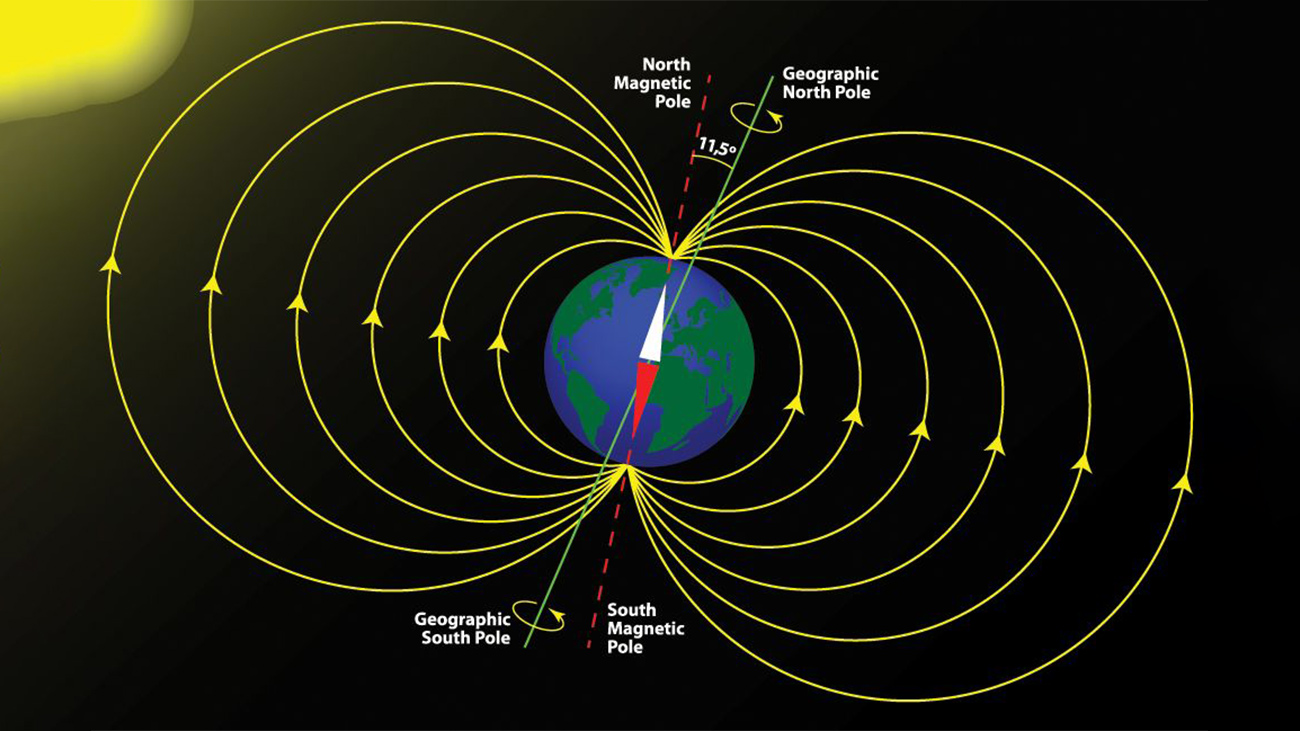Understanding Magnets and Magnetic Fields
This article explores the mechanics behind magnets and their magnetic fields, uncovering how these invisible forces shape our technology and natural world.
Table of Contents

What is a Magnetic Field?
A magnetic field is the area around a magnet where magnetic forces are exerted. This field is represented by magnetic field lines, which illustrate the direction and strength of the force. These lines emerge from the north pole of a magnet and curve around to enter the south pole, creating a closed-loop system.
Key points about magnetic fields:
They are vector fields, meaning they have both direction and magnitude.
The density of the lines indicates the strength of a magnetic field at a given point.
Magnetic fields are created by moving electric charges or intrinsic magnetic moments of particles like electrons.
How Do Magnets Work?
The phenomenon of magnetism stems from the alignment of tiny magnetic domains within a material. In magnets, these domains are synchronized, producing a unified magnetic field. This alignment occurs due to the unique arrangement of electrons with the same spin direction.
Notable properties of magnets:
Poles of a magnet: Magnets always have a north pole and a south pole. Breaking a magnet will result in two smaller magnets, each with its own poles.
Magnets attract or repel other magnetic materials, depending on the alignment of their poles.
Permanent magnets, like neodymium magnets, retain their magnetic properties over time, while temporary magnets require an external magnetic field to stay magnetized.
Types of Magnets and Their Properties
Permanent Magnets
Permanent magnets are materials that maintain a stable magnetic field without an external source. Neodymium magnets, a type of rare-earth magnet, are among the strongest permanent magnets, widely used in industrial applications.
Electromagnets
Electromagnets are created by passing an electric current through a coil of wire wrapped around a ferromagnetic core. The strength of an electromagnet can be adjusted by varying the current.
Temporary Magnets
Temporary magnets exhibit magnetism only when influenced by an external magnetic field. They are commonly made from soft ferromagnetic materials like iron.
| Type of Magnet | Key Features | Common Applications |
|---|---|---|
| Permanent Magnets | High magnetic force, stable field | Motors, speakers |
| Electromagnets | Adjustable strength | Electric motors, solenoids |
| Temporary Magnets | Depend on external fields | Induction experiments |
Magnetic Field Lines: Visualizing the Invisible
Magnetic field lines provide a visual representation of the magnetic field. They:
Exit the north pole and enter the south pole of a magnet.
Indicate the magnitude of the field, with denser lines representing stronger fields.
Never intersect, as this would imply conflicting field directions.
In bar magnets, field lines form symmetrical loops, making them ideal for studying magnetic flux and field interactions.
Magnetic Properties and Materials
Magnetic materials can be classified based on their response to external fields:
Ferromagnetic Materials
Examples: Iron, cobalt, nickel.
Strongly magnetized in an external magnetic field.
Paramagnetic Materials
Weakly attracted to magnetic fields.
Diamagnetic Materials
Slightly repelled by magnetic fields.
Understanding these properties helps in designing specialized magnets, such as neodymium magnets, tailored for industrial and technological uses.
The Role of Magnetic Domains
Inside a magnetic material, regions known as magnetic domains contain aligned magnetic moments. When these domains align uniformly, the material becomes magnetized. External forces, like a strong magnetic field or mechanical stress, can alter domain alignment, affecting the material’s magnetism.
Applications of Magnets in Daily Life
Magnets play a critical role in modern technology, offering solutions in fields like:
Electronics
Speakers: Magnetic forces convert electrical signals into sound.
Hard drives: Utilize magnetic properties for data storage.
Energy
Wind turbines: Employ powerful magnets in generators.
Medicine
MRI Machines: Use strong magnetic fields for imaging.
Explore custom solutions for specific industries here.
Conclusion: Harnessing Magnetic Fields
Magnets and their magnetic fields are essential to technological progress. From their role in electric motors to their use in cutting-edge medical equipment, understanding their principles allows us to innovate and optimize.
Key Takeaways
Magnetic field: The area around a magnet where forces operate.
Types: Permanent, temporary, and electromagnets.
Applications span industries like energy, medicine, and electronics.
For further insights, visit Neodymium Magnets Factory.
Welcome to our factory’s custom NdFeB magnet services, where your ideas and needs become reality.
Simply share your concepts, requirements, or design drawings, and we’ll work closely with you to produce high-quality NdFeB magnets tailored to your exact specifications and performance standards.
You’ll benefit from competitive pricing, complimentary samples, and professional technical support from our dedicated team, making the customization process worry-free, safe, and cost-effective.
Our goal is to ensure that your products achieve outstanding performance with the highest level of quality and precision.
Economic Development Zone, Industrial Park, Shehong City, Sichuan Province, China.
Contact
News
US Department of Defense Allocates $5.1 Million to Recover Rare Earths from E-Waste
On January 17, 2025, the US Department of Defense announced a $5.1 million allocation to Rare Resource Recycling Inc. under the Defense Production Act.
China Revises and Implements the “Regulations for Outward Direct Investment Statistics,” Including Rare Earth Oxides
It is reported that on January 1, 2025, the Ministry of Commerce, the National Bureau of Statistics, and the State Administration of Foreign Exchange officially implemented the revised “Regulations for Outward Direct Investment Statistics.”
Canada Rare Earth Acquires Majority Stake in Laos Rare Earth Refinery
According to Magnet Materials News, on January 9, 2025, Canada Rare Earth Corp. announced plans to acquire a 70% stake in a rare earth refinery in Laos. This acquisition aims to enhance supply security and economic benefits.



